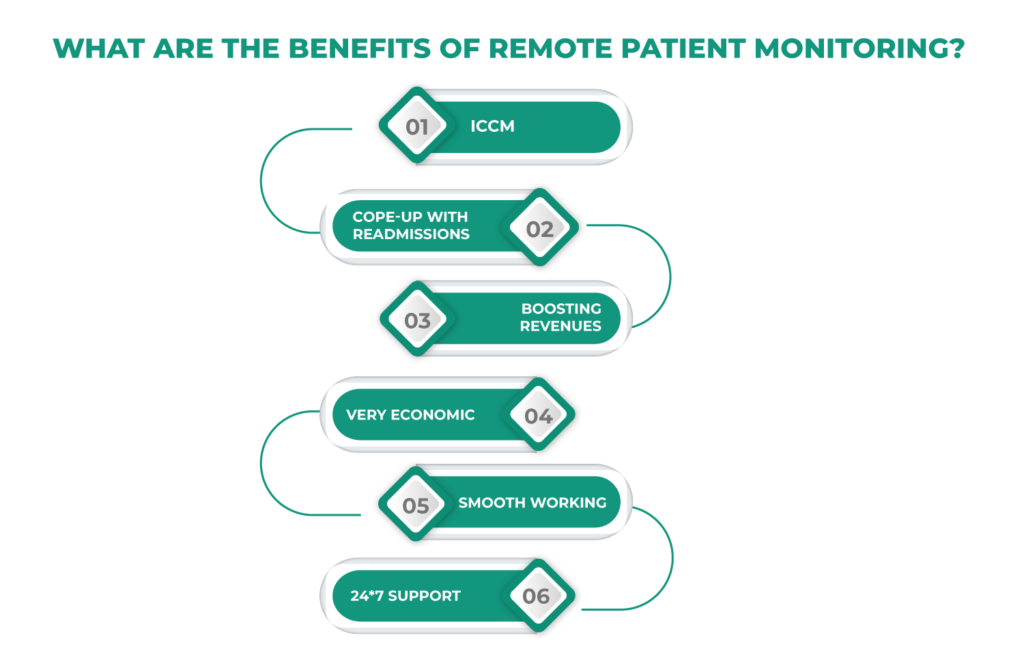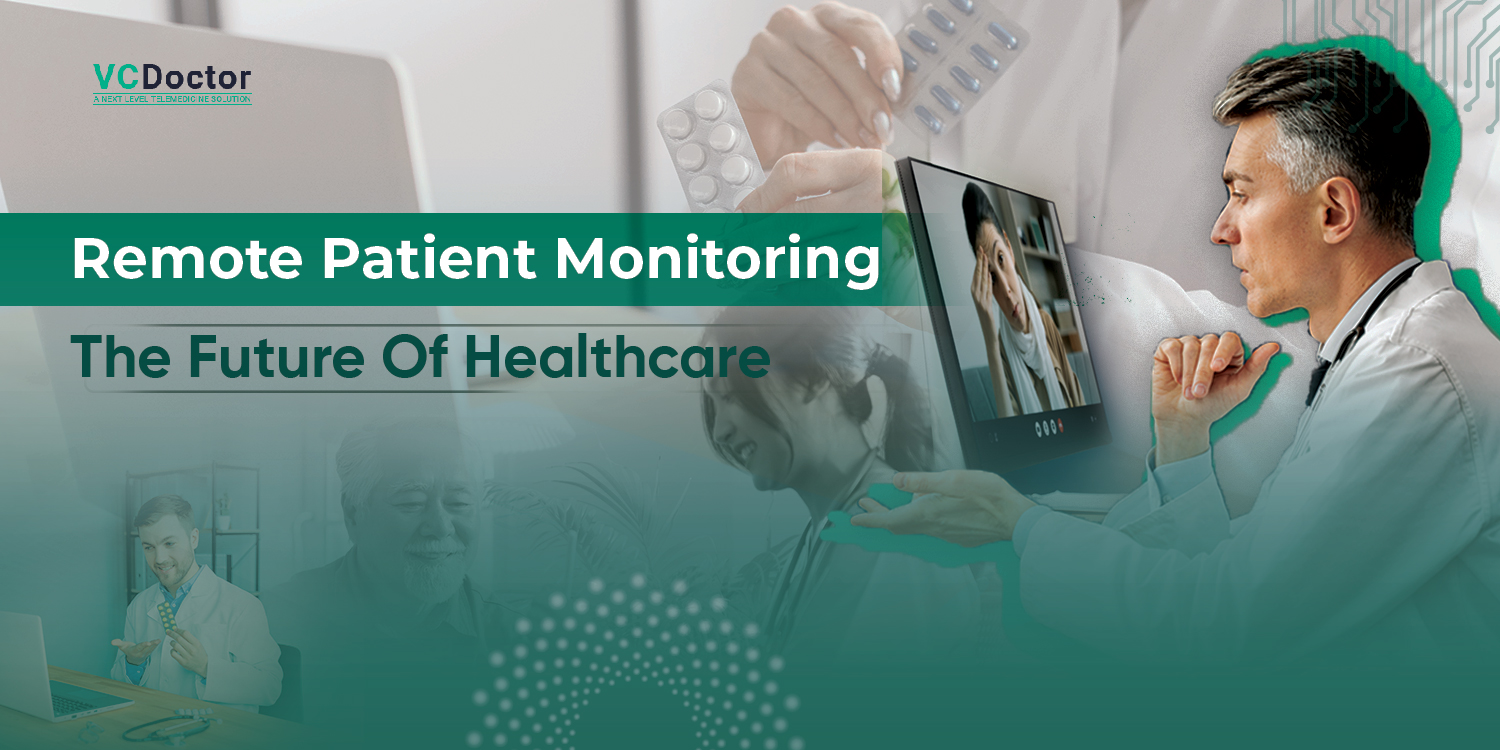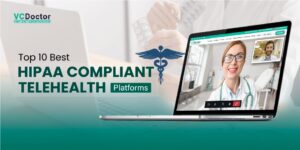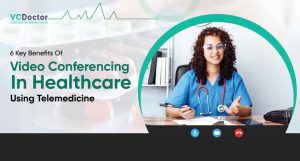Remote Patient Monitoring: The Future of Healthcare
A major change is occurring in the healthcare business. Healthcare facilities are driving their attention towards Patient Remote monitoring technology, by providing patients with the means to independently monitor their vital signs and health information from the comfort of their own homes. The constant flow of health data provides doctors with a comprehensive picture of a patient’s health trajectory beyond the piecemeal images acquired during typical office visits. This enhanced vision opens up a world of opportunities for the future. Timely interventions and modifications to treatment programs are made possible by early identification of possible health issues.
Personalised and proactive use of preventive care measures may delay the emergence of chronic diseases and consequences. Moreover, Remote Patient Monitoring facilitates communication between doctors and patients, encouraging a team-based approach to healthcare administration. This change has ramifications that go beyond specific individuals; it may also save healthcare expenses by lowering needless hospital stays and admissions. To put it simply, the “invasion” of RPM has the potential to completely transform the way that healthcare is delivered, bringing with it better preventative care, patient-centered treatment, and eventually, a healthier future for all.
Table of Contents
- Growth Stats of Remote Patient Monitoring in Healthcare Industry
- What is Remote Monitoring in Healthcare?
- What Are the Benefits of Remote Patient Monitoring?
- What is the Future of Remote Patient Monitoring (RPM)?
- Is Remote Patient Monitoring Considered Telehealth?
- Conclusion:
Growth Stats of Remote Patient Monitoring in Healthcare Industry
Healthcare firms are highly focused on developing a professional mobile app and a telehealth app that manages the communication between patients and doctors. If you take a look at the global stats of Remote patient monitoring systems in the healthcare industry. You will find that the current net value recorded in 2023 is more than $71.9 billion. The exponential growth of telehealth facilities grew during the COVID period, when everyone was facing severe issues but couldn’t reach out to professional doctors.
However, the exciting part is that the healthcare industry is revolutionizing the remote monitoring system, and it’s going with a CAGR of 23.6%. Exports are estimating that by the end of 2028, the market size will grow to $207.5 billion.
What is Remote Monitoring in Healthcare?
In scientific terms, RPM (remote patient monitoring) is a process of providing healthcare that utilizes the latest advent in information technology to collect patient data above the traditional healthcare settings.
RPM enables patients as well as doctors to communicate properly. A patient can describe acute or chronic Disease health disorders. Simultaneously, the doctors can give their enough time in understanding the medical positions of the patient.
Remote monitoring of patients also gives access to the people living in far-flung areas. It is a savior for the population with fewer resources or money. Consultation fee, travelling from remote to urban areas, etc. gets exempted on availing RPM cheat sheet code Services.
What Are the Benefits of Remote Patient Monitoring?
To name a few benefits enjoyed by the physicians and doctors, quick access to patient’s data, disposing high-quality diagnosis and care to the patients. These are the prominent features that physicians get with the RPM Mechanism.
But, what are the telemedicine solutions for patients? When they avail themselves of Remote Patient Monitoring (RPM). Well, they also enjoy some amazing attributes like:
- Improved Healthcare Service
- Better Version of Care
- Mental satisfaction and Routine Assurance
- High-Quality Assistance, Education & Feedback

1. Improved Healthcare Services
With the spiking strength of insurance holders and other health benefits, it has become a tough task to get advanced healthcare services. Remote health monitoring gives equal opportunity to the physicians as well as to the patients in gaining equal access to healthcare services.
2. Better Version of Care
Not only has the quantity of serving the patients has affected by RPM, but, the quality of medical care has also been improved. RPM contains a direct approach with patients and their clinical data, providing efficiency to the daily routine and eases the possibility of burnout.
Some of the physicians claimed to have improved behavioral activities like more engagement, adherence to medicines, being more proactive towards health, etc. Hence Remote Patient Monitoring is the ultimate tool for accessing great healthcare services, being at home.
3. Mental Satisfaction and Routine Assurance
After providing comfort and engagement with both, the benefits are not close yet. RPM offers an invaluable thought that someone is behind their medical well-being on a routine basis. It’s more like an assurance that a healthcare provider is with them all-time through Remote Patient Monitoring.
4. High-Quality Assistance, Education & Feedback
The credit goes to this continuous, instant connection between the patient and doctor, provided by the RPM Mechanism. The tool deals in the extended level of healthcare education, 24*&7 support, and submission of feedback.
Remote monitoring allows any patient to gain an overtime knowledge of their medical background. This helps them in learning more about their medical state and what necessary steps they should follow.
These were the few benefits of getting the Remote Monitoring tool in my hands. Now we will be discussing the future scope of the mechanism. Let’s get started.
What is the Future of Remote Patient Monitoring (RPM)?
According to the American Heart Association (AHA), Remote Patient Monitoring (RPM) is a unit of Telehealth tool that accommodates patient health and respective data to the healthcare team. This data is again then shared with the patient promptly.
In comparison to other telehealth tools, RPM does not operate on interacting with Video Communication, neither it is restricted to a particular boundary. All kinds of RPM Solutions need a technique that centralized and interprets physiological patient data. There are a few pointers that better described the future of RPM Solutions.:
- Easy Implementations
- Low-Cost Clinical Impacts
- Mobile RPM Solutions
1. Easy Implementations
People residing in far-flung areas are much aware of the Bluetooth connections, setting up wifi, or other activities. RPM solutions are built in a way that does not need much connection or set-ups and is successfully implemented in any corner of the world.
2. Low-Cost Clinical Impacts
In the light of COVID-19, healthcare centers are working with less individual support. The margins are tight and thus delivers high-cost and less engaging telehealth software for clinics. But the experts believe that the remote patient monitoring future will be as bright as the sun and people tend to more engagement and facilities will be available at lower-cost plans.
3. Mobile RPM Solutions
An increasing number of doctors are facilitating mobile-based RPM solutions known as mRPM. It is expected to grow in the coming years too. mRPM technology request patients to enter the significant details and deliver them fascinating services. The futuristic remote monitoring solutions will drive large populations and businesses to the healthcare centers.
Is Remote Patient Monitoring Considered Telehealth?
No, we cannot treat both of the terms as a whole. Remote Patient Monitoring (RPM) is a subset of Telehealth. RPM is a narrow term that deals in interaction with the patient of the doctor remotely.
Telehealth market is a broader term on its own. It accompanies the entire healthcare industry, technology, and matrix to deliver remote healthcare services. Telehealth facilities may carry the telephonic conversations, video-conferencing aspects, IVR facilities for patients, etc.
Get your customized RPM app like VCDoctor for your firm
Conclusion:
The advanced approach of telehealth app development empowered the necessity of remote patient monitoring devices, which provide a secure portal for us to take and receive desirable assistance. Although people believe that there will be more revolution in the healthcare sector, IT companies will specifically focus on remote patient monitoring systems, which will be unified as a single and constricted portal for communication.
Along with RPM, healthcare firms will introduce other apps that will help them generate more revenues and business for different needs. Overall, there is no doubt that there will be more announcements and more creative ideas with remote patient monitoring systems, and people worldwide can find their best medical treatment. So wait, no more an optimizer app with the intelligent integration of a remote health monitoring system.
FAQs
1. How will telehealth apps and RPM function synergistically?
Telehealth apps will transform into user-centric portals, seamlessly integrating RPM functionalities. Patients can securely record vital signs, share health data with providers, manage medication schedules, and schedule virtual consultations – all within a single, intuitive platform.
2. What are the anticipated benefits of a combined telehealth app and RPM approach?
Patients and healthcare providers are benefiting from the potent combination of telehealth apps and remote health monitoring. Patients now have the ability to manage their own health. Through an intuitive app, it can effortlessly monitor their development, receive tailored guidance from their physicians, and establish a virtual connection with them. Better health results for patients and an all-around more positive healthcare experience could result from it.
3. Can telehealth apps with RPM have a positive impact on healthcare economics?
Telehealth apps with RPM enable proactive care management and early health issue detection, which can enhance healthcare resource allocation. Early intervention may minimize avoidable readmissions and hospital admissions, which would lower total healthcare expenses.
4. What are the data security considerations for telehealth apps and RPM?
Data security is still very important. To protect patient information, trustworthy telehealth platforms will use strong encryption mechanisms and follow strict laws like HIPAA. Apps that promote data security and privacy must be chosen by patients and healthcare providers.
5. Who stands to benefit from this technological advancement?
RPM-enabled telemedicine applications have several uses. They are particularly helpful in the management of several chronic conditions, including diabetes, heart disease, and respiratory conditions. Furthermore, the method can be used for post-surgical surveillance and at-home recovery after severe illnesses. The future holds even more potential uses for this revolutionary method of delivering healthcare as technology develops.





The fantastic information provided on remote patient monitoring is essential for any healthcare organization. I liked the explanation and information in the post.
Thanks for sharing an article on remote patient monitoring. It’s informative and well-structured.
The remote patient monitoring feature is impressive, and the explanation in this blog is excellent.
Best and most informative post. I liked it because it provides information in a sequence, and UI is Amazing.
Remote patient monitoring can change the future of healthcare. With the help of remote patient monitoring, doctors can provide treatment to patients who cannot reach the best doctors. Informative post. Thanks for sharing.
Remote patient monitoring is a crucial part of the healthcare industry, and every healthcare department should adopt this according to their needs. Nice post!